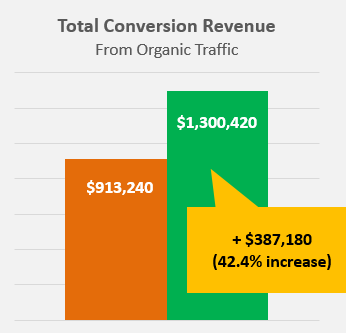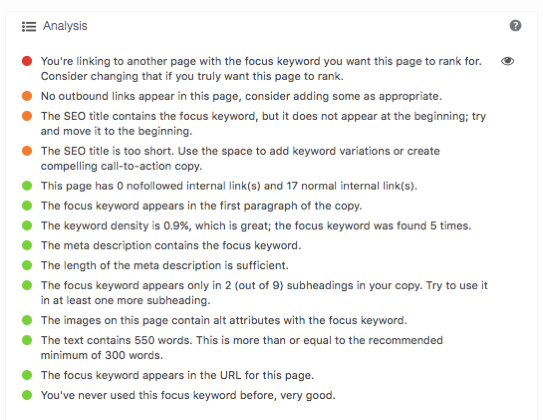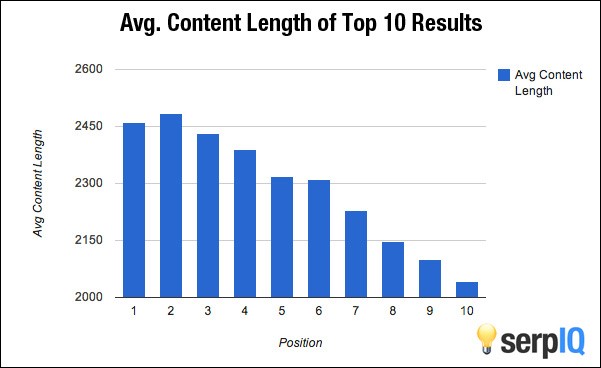Content is perhaps the most important aspect of an SEO strategy. Great content offers you excellent ROI and in the long run, it’s worth every second and penny that you put in. What’s more, evergreen and killer content can help you generate revenue online.

But unfortunately, the majority of businesses write content just so that they’re posting on a regular basis. Perhaps, they’ve heard that a business pushing out content regularly gets better traffic and rankings.
Nowadays, anybody can mass-produce a blog after a blog post, draw up infographics, as well as make plenty of podcasts easily and upload them afterward. However, it is worth remembering that writing content without predictable and planned ways is just a waste of time and may divert big amounts of important resources.
Nevertheless, if you don’t want to experience the above-mentioned scenarios, then keep on reading. In this guide, we will show you almost everything that you need to know with regards to producing killer content for SEO.
Table of Contents
How to Produce Killer Content for SEO?
There is no magic trick for producing killer content that will rank on Google’s first page. It means you need to work hard and be patient.
Nevertheless, below is a step-by-step guide which surely helps you in creating killer SEO content.
Step 1: Understand the Structure of Great and Killer Content
Here’s the structure that most bloggers and content creators usually use.
- Eye-catching headline
Often the very first thing readers will see is your headline. That is why it should be eye-catching and interesting so that people will read it. Avoid making headlines that are boring.
Actually, there are some headline tools that you can use which can help you in making interesting headlines, Co-Schedule headline analyzer for an example.
- Catchy Images
One way to split up the text in a blog post is by adding some catchy pictures. But as a reminder, make sure to check the images’ copyrights before posting.
- Introduction
Another way to make people read your content is to make a good introduction. In this section, you need to convey to individuals why they should read your content. Furthermore, do not overwrite your intro. Take note a punchy introduction is much more effective. Either way, I will show you how to make a good introduction later on.
- Lead In
After your introduction, lay down your main points. For instance, if you’re making a list style, you can make use of a line like “The main points for this post are”.
- Deliver the main points
When delivering your main points you can actually use bulleted lists to break down them. Or use a heading above your paragraphs.
- Conclusion
Keep in mind that the content you’re producing is not a college essay. So, rather than repeating the same points, simply make a closing paragraph that summarizes the whole content.
Step 2: Understand the Process of Blog Post On-Page SEO
According to Search Engine Journal, 70% – 80% of people neglect paid search results and focus on organic results. However, when it’s done right, on-page SEO will improve your search results. In fact, a B2C company found a 42.4% revenue increase when they sent organic visitors to their website.

On the other hand, the process of structuring the content, laying out the page, and optimizing the different page elements are what on-page SEO is about. However, the main goal of on-page SEO is to drive traffic from Google and other search engines and help your page rank even higher.
Nevertheless, when you’re performing on-page optimization, make sure to keep an eye on the following elements:
- Title tag
- Content
- Meta tag
- Image alt text
- URL
Step 3: Make Content Your Content Crammed With Value

If you want your content to deliver value, you need to make them real. Remember that most readers are sick of reading generic posts. And they are looking for something relevant and beneficial.
In order to make sure they’re addressing the right topics, successful writers use the ‘Editorial Calendar’ – a tool that lets them produce killer content even if they haven’t been blogging for long.
Plus, your content must be high-quality. In fact, according to a report by Social Media Examiners, more than 50% of all salespersons agree that useful and unique content is known as the most important kind.
Of course, the more actionable and unique your content is, the more traffic will be pulled in.
Remember that ranking in search engines won’t happen all of a sudden. With consistent effort and time, you will notice jumps in your rankings.
When writing killer content for SEO, you need to have a plan and written strategy. Nevertheless, make sure to use it consistently. You can also learn from other writers’ post to increase your referral traffic and organic search.
Step 4: Captivate Your Audience Using the AIDA Model (Attention, Interest, Desire, Action)
AIDA is actually an in-effect model for creating killer, engaging, and persuasive content. In fact, such content has higher chances to reach the top 10 search engine ranking of Google.
Step 5: Build Inbound Links To Your Content

Did you know links are the backbone of search engine optimization? In fact, it supports every optimization strategy and tactic. Meaning that, you can’t avoid it. Especially if you’re producing killer content for SEO.
Most bloggers and content creators are face a hard time building or earning links to their content.
When useful content and correct links meet, the outcome is a considerable boost is search rankings.
Even though you are not having a hard time creating and publishing content on a regular basis, getting other writers to link to such content is not easy, though worthwhile.
That said, here are some ways to brush up your content so you can land more of such high quality links to your content.
Additional Tips for Writing Killer Content for SEO
- Place your keyword in H1, H2, and H3 tags
When Google is crawling your content, it’s actually determining the most crucial point you are making. So the question is, what exactly is Google looking at? As we all know, one main attribute that Google examines is the header tags. By simply placing your keyword in header tags, Google will determine that the key phrase you’ve chosen is the main topic of your post.
- Update the alternative text tag on the pictures to incorporate your keyword
If you add pictures in your content (which is highly recommended), make sure to include your target keyword in the image’s alt text tag.
- Include the keyword in the URL
When writing content for SEO, always include your keyword in the URL. And if your keyword contains two or more words, then avoid using the stop words (a, an, the, of, etc.).
On the other hand, including your target keyword close to the front of the URL will help you boost its SEO.
Here is an example:
Your Target Keyword: SEO content
Bad Usage: abc.com/seo/your-guide-to-the-seo-content
Good Usage: abc.com/seo/ SEO-content-guide
- Don’t forget your meta description
When it comes to SEO, Meta descriptions are super crucial. A Meta description is a bunch of lines someone has on hand when he/she decides to open your content in the search engines, which may affect the CTR or click-through rates. As a matter of fact, higher CTR equates to higher SEO rank.
Nevertheless, don’t forget to mention the keyword you’re targeting in your Meta description.
- Avoid Keyword Stuffing
No matter how great and engaging your content is, if you do keyword stuffing, it will become worthless.
In the past couple of years, SEO used to be a game of trying to manipulate Google by means of stuffing as numerous keywords as possible, whether they have a sense or not. As a matter of fact, it really worked.
Fast forward to today – content marketers, as well as SEOs, distinguish that you have to make high-quality content which answers people’s question when searching on Google. That’s what genuine search engine optimization is about – optimizing for the audience and not for the search engines.
If you’re optimizing your content and using relevant keywords, Google will reward your content by boosting its ranking.
But how will you know if you are stuffing keywords or not? Well, it’s pretty easy. After writing your content, look for the content using search-&-find. So if your content or post lights up like Christmas lights, you have probably used your keyword excessively.
- Look for the right technology
With regards to optimizing your content, there are myriads of technologies that you can use to scan your content. For WordPress users, Yoast is the most recommended plug-in.
This plug-in ensures that your content is fully optimized for search. But if you are working in Google docs or in some different CMS, you can look for a plug-in online and download it.
Example of a Yoast Plug-In:

Nevertheless, the Yoast plug-in shows you many colors to tell you how well you have performed the needed actions to reach great SEO content.
- Green – Good
- Orange – OK
- Red search – Needs Improvement
- Create at least 2000 words content
Do you know that longer content usually ranks better in search engines? In fact, according to a 2017 study, the average word count for content is 1142. According to Buffer, your content must contain 1600 words or more.
Nevertheless, according to a detailed study performed by SerpIQ, the highest ranking page is usually longer. Though there are some exceptions that must be taken into consideration.

How to Optimize Your Killer Content for Your Users?
Ensuring that your content is easy to read is very important if you want to rank on Google’s top rankings.
To help you make this kind of content, we will show you how to optimize the blogs that you are making.
- Avoid writing long sentences
- Use some headings to break your content in several parts. As it turns out, it is vital for long content
- Use tables
- Add more infographics, visuals, embed videos, podcasts, and maps
- Incorporate margins between sentences particularly in the first portion of your content
The above-mentioned tips will surely help you in optimizing your killer content.
How to Make A Good Introduction?
Having a good intro is just a part of producing killer content as it draws people further to your post. Usually, it states a point that hooks people and makes them want to check more out.
Either way, here’s how to make a good introduction for your killer content.
- Inform and warm up your readers what they will obtain if they read your content.
- Restate the solution or problem that was presented in your headline so that you will be able to show to your readers that you understand them.
- Create a thesis or provide a statement which summarizes what your content is all about.
Keep in mind that the main purpose of a great introduction is to fuel the interest of readers. Though you should not spend a lot of time on your intro you should be offensive here as well. Similar to your headline, your content’s intro will determine the performance of the content to a bigger extent. For more
Conclusion
Content is indeed one of the most crucial ranking factors for search engines, particularly for Google. However, killer content work in SEO these days. So if you want to rank high, then you need to produce unique and great content and following this guide is all that you’ll need.

